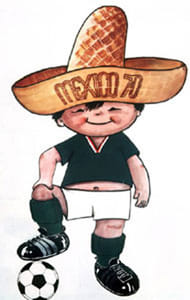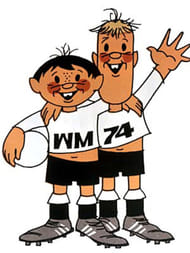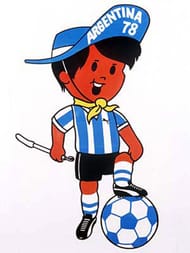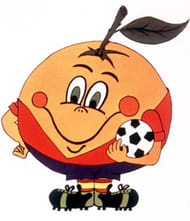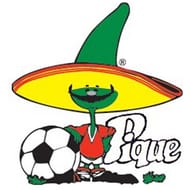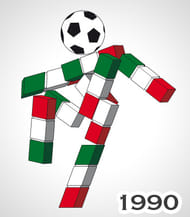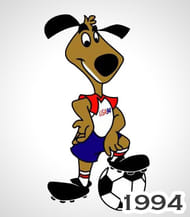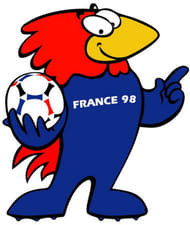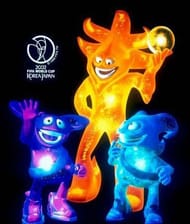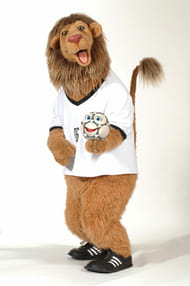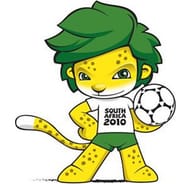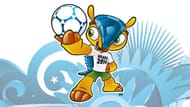Mascots are now commonplace for any major international sports event, as they represent a specific feature of the country hosting the event.
The FIFA World Cups saw mascots introduced in 1966, and they have been a feature of the competition ever since.
Here is a look at all the mascots that featured in the competition’s history over the decades, including the one that will be used next year in Brazil.
World Cup Willie (1966, England)
The first-ever mascot in the history of FIFA World Cups, World Cup Willie was a cartoon lion wearing Britain’s Union Jack and kicking a football.
Willie was drawn by Reg Hoye, who also illustrated a few of Enid Blyton’s children’s books. When asked to design a mascot, he made Willie based on his son Leo, with the design eventually getting chosen as the final mascot.
Willie proved to be lucky for the Three Lions, as they won their only World Cup on home turf, while the tradition of having a mascot representing a specific event kicked off, never to look back.
Juanito (1970, Mexico)
Mexico followed in the tradition that England had set in 1970 by designing their own mascot, but tried something a little different, as Juanito, as he was called, was not a lion but a young boy.
Juanito wore Mexico’s green colors and a sombrero while standing in football attire, and became a symbol of innocence and fair play for the World Cup which was the first that was broadcasted around the world in colour.
Alemania (1974, Germany)
The World Cup in ’74 saw Germany design two boys, called Tip and Tap, wearing German kits and a ball. On their uniforms were written ‘WM 74′, which stood for Weltmeisterschaft 74.
The concept behind the design was said to be the effort towards strengthening relations between the two Germanies at that time.
Gauchito (1978, Argentina)
Argentina followed in Germany’s idea to keep kids as mascots for the World Cup, designing little Gauchito, a young boy wearing Argentina’s kit, a hat with ‘Argentina 78′ written on it, a neckerchief and a whip.
The attire resembled that of the traditional South American gauchos. Many however criticised Gauchito for being too similar to the mascot of the 1970 Mexico World Cup.
Naranjito (1982, Spain)
Spain introduced a change from the previous World Cups that had either animals or humans as their mascots by designing Naranjito, which was an orange, a fruit grown in large proportions in the country.
Naranjito wore Spain’s football kit while holding a ball, beaming a big smile to describe a change in scenery in the nation after the end of dictatorship and exemplifying an optimism in the future.
Pique (1986, Mexico)
Hosting their second World Cup, Mexico wanted a completely different mascot from their previous one, Juanito, and thereby created Pique, a green jalapeno pepper which had a moustache and a sombrero.
The name Pique came from ‘picante’, Spanish for spicy peppers, a taste very characteristic of the Mexican cuisine, while a football next to it showed its passion for the game.
Ciao (1990, Italy)
Wanting to go in a completely different direction altogether, Italy created Ciao, a stick figure football player that was draped in the colours of the Italian flag, and had a football as its head.
It got mixed reviews upon its release, with many criticising an apparent lack of effort from the Italians in making a Lego-type stick figure, while others praised its simplicity and concept.
Striker, the World Cup pup (1994, USA)
The United States went back to the idea of having an animal as the mascot for their first-ever World Cup, creating Striker, a dog that, similar to its name, played upfront.
Wearing the US’ red, white and blue, Striker was designed by the Warner Brothers animation studios, and had USA 94 written on its shirt.
Footix (1998, France)
A rooster, one of France’s national symbols, was chosen as the mascot of the 1998 World Cup, with Footix, as it was called, having a blue body much like France’s kit, a yellow beak and red feathers.
The name Footix was chosen after 47 percent of the 18,500 respondents to a vote chose it over the likes of Zimbo, Houpi, Raffy and Gallik.
Ato, Kaz and Nik – The Spheriks (2002, South Korea and Japan)
The first World Cup in Asia saw Japan and South Korea create a futuristic design for their mascot, as orange, purple and blue creatures were made by the organisers.
The concept of the mascot was that the Spheriks were members of an ‘Atmoball’ team, the sport being a imaginary football-like game, with Ato the coach, and Kaz and Nik the players.
The names of the Spheriks were chosen by the countries’ public after over 980,000 votes were cast.
Goleo and Pille (2006, Germany)
The second lion mascot to be made for the FIFA World Cup, Goleo wore a Germany shirt with the number ’06′ on its back, and carried around a football which was called Pille. The name Goleo came from the words ‘goal’ and ‘leo’, the latter being Latin for ‘lion’.
The mascots were unveiled in 2004, and were presented by Franz Beckenbauer and Pele. However, much criticism was directed towards the organisers for designing a lion, which was not a traditional German animal and was part of the emblem of rivals Netherlands and England.
Zakumi (2010, South Africa)
The 2010 World Cup in South Africa saw the creation of a leopard as its mascot, with Zakumi owning a green mane and wearing a shirt that said ‘South Africa 2010′.
Its green and golden colours represented the colours of South Africa’s national sports teams, while its name came from Za (for South Africa) and Kumi (which meant ‘ten’ in African languages, the year in which the World Cup was being held).
Fuleco (2014, Brazil)
Fuleco is a three-banded Brazilian armadillo that has been created for the 2014 World Cup, with the focus being on the safeguarding of the environment with the representation of this endangered species.
Fuleco is derived from Futebol (football) and Ecologia (ecology), with the armadillo an ambassador for a drive aiming to save the environment and making the World Cup environment-friendly. Fuleco was chosen after the organisers went through 47 different proposals that were made.

